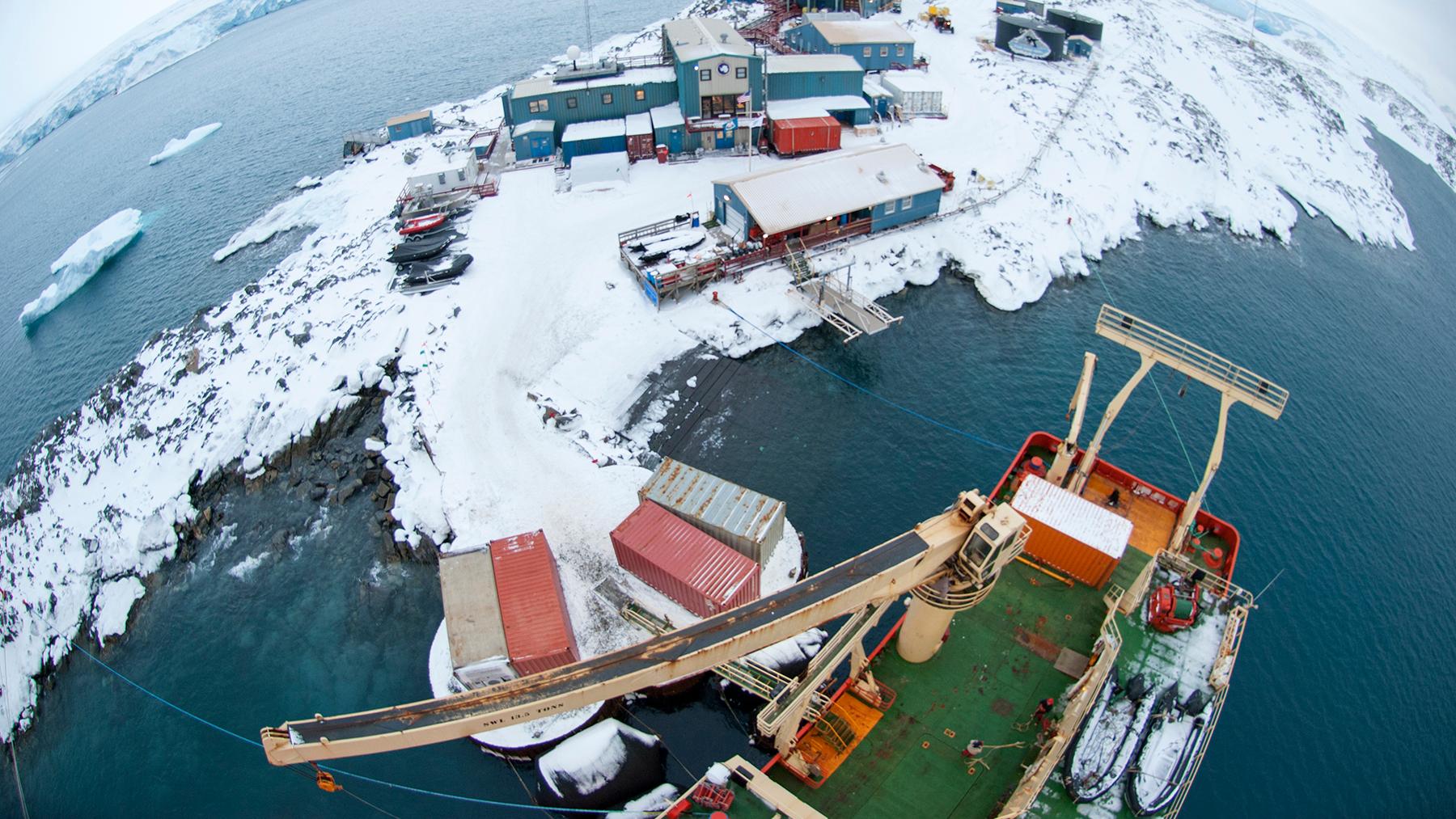In photos: Life in one of the most remote places on Earth
A view of the Laurence M. Gould and Palmer Station from the top of the science mast.
Daily life in Antarctica isn't all whites and greys. Just ask marine scientist and designer Skye Moret.
She spends between three and four months every year sailing around Antarctica. During that time, she helps researchers with their work and translates it all into a relatable narrative. The ship she's traveling on splits its time between providing food and other supplies to a small station completely cut off from the rest of civilization for three months at a time, and housing sceince within the US Antarctic Program.
But when she's not working, she's just living daily life in one of the most remote areas in the world. Here's what that looks like.
1. A slice of blue in the Southern Ocean
A glimpse of the brilliant blue Southern Ocean surface peeks through pack ice in the wake of USAP icebreaker, the Nathaniel B. Palmer.
2. Miles and miles of sea ice
This was the brightest day. A teal line of brash ice shows where the floating ice collides. Penguin Island is in the distance.
3. Ping-pong in the cargo hold
One of the electronic technicians built a ping-pong table last year and it lives in the cargo hold. We set up barrier boxes to avoid losing the little white ball amongst pipes, crates, and giant propeller blades. The roll of the ship adds to our friendly ping-pong challenges.
4. Double iceberg arch near Palmer Station
Giant icebergs arches are always a treat to see. Deeper than they are tall, they ground themselves in the shallows near the islands and continents.
5. Lantern fish on a petri dish
We catch myctophids, or lantern fish, at night when they venture close to the sea surface. These three fish lost most of their scales in the net, the contrast shows off their photophores, or bioluminescent spots, which help them blend in with their environment and avoid predators.
6. So. Much. Krill.
Net tows off the Western Antarctic Peninsula brought up heaps of krill. They were likely feasting on algae found on the bottom edge of the sea ice. Vital to the ecosystem here, they are also prized by the fishing industry. The US is the largest consumer of ‘krill pills’ that contain omega-3 fatty acids.
7. A tabular iceberg south of Elephant Island, Antarctica
These flat-topped icebergs, called tabular bergs, are formed when ice shelves calve — or break free — of the larger ice shelves of which they were a part. On my last cruise we saw several tabular bergs more than 10 miles long, a stark reminder of our warming climate.
8. Icefish painting
Icefish are unique and vulnerable to climate change. They have white blood — they lack iron-rich hemoglobin — and other highly evolved adaptations to survive the extreme Antarctic temperatures (29F / -1.6C), like antifreeze proteins.
During my off-hours, I painted this lone icefish being studied by scientists.
9. Extreme ice accretion
When the weather forecast says “extreme ice accretion” off the Antarctic Peninsula. Any precipitation freezes onto the vessel when it is -40F (same as -40C) outside.
10. The Laurence M. Gould dockside in Punta Arenas, Chile
The smaller of the two US Antarctic research vessels, the Laurence M. Gould gets prepped for sailing in the Straits of Magellan.
11. Iceberg in grease ice
Grease ice is one of the first stages of forming sea ice, where the surface takes on a seemingly oily texture. When wind pushes the ‘bergy bits’ floating amidst, they leave long wakes through the grease ice that make the bergs appear to be racing each other.
If you want to see more of Skye's research, follow her on Instagram or check out her website.
